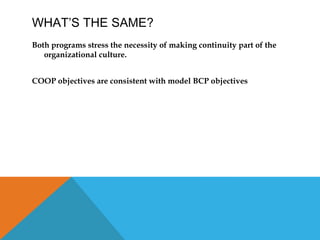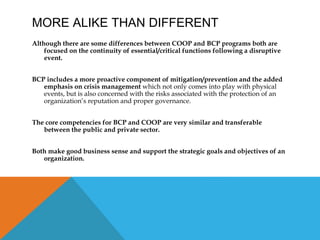The document provides information about a presentation on continuity of operations (COOP) planning. It notes that FEMA released new COOP guidelines in 2011 that may become required for companies doing business with the government. While COOP and business continuity planning (BCP) have similar goals of continuing essential functions, COOP has more standardized requirements around elements, testing, and compliance. The presentation advises organizations to consider whether COOP guidelines apply to their operations and conduct a gap analysis between their current BCP plan and the COOP requirements.




















